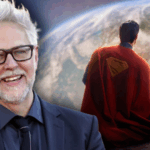(PG) Ben Barnes, Georgie Henley, Skandar Keynes, Gary Sweet
So far the Narnia films have been fairly faithful to the books, condensing and adding a little poetic licence, but this is to be expected from Lewis’ prose.
The Dawn Treader contains one of the clearest metaphors that exist for maturing to Christ and is one of the favourite books in the series for fans for this reason.
Much of the Dawn Treader’s journey has been condensed in the film but key scenes remain unscathed and translate well to the screen.
Lucy, Edmond and the reluctant Eustace are transported to Narnia through a forgotten painting of a galleon among the waves.
Suddenly the painting comes to life, pouring water into the room and transporting them to the Eastern Sea in Narnia beside the Dawn Treader, where Prince Caspian and his crew pluck them from the water.
Edmund and Lucy are thrilled to be back in the land they once ruled as a High King and Queen; the perpetually-whining Eustace, a newcomer to this world, is much less enthusiastic.
The trio soon learn the reason for Caspian’s voyage east: He is fulfilling an oath to find the seven lost swords of the Lords of Telmar, the best friends of his murdered father. Their journey takes them to a series of islands, each of which brings the ship’s crew unexpected peril and adventure, and each has its own hidden, seductive secret.
The film contains a clear journey to maturity for the Pevensie children. Much store is placed in the notion that veering off the task (vanquishing evil in Narnia) will enable temptation and fears to take hold.
Prince Caspian and the children must lay the seven swords of the lords of Narnia upon Aslan’s banquet table so all will be put right once more. They are joined by the warrior mouse Reepicheep (voiced by Simon Pegg) and the crew of the Dawn Treader.
Of particular interest after having read the books many times was the possible inclusion or (horror) exclusion of Eustace’s transformation into a dragon.
Although Eustace’s struggle is reduced to a few lines in the film, the book details him trying to remove scales and struggling for escape from his dragon skin.
Aslan agrees, but tells Eustace that the change will be painful. He explains that he must use his claws to scrape the dragon skin off of Eustace’s body. Though reluctant, Eustace agrees and, through pain and anguish, he is transformed back into a boy.
This scene presents such a great metaphor for the Christian life. Our relentless God scrapes, rips and sheds our deformations and sin.
Does it hurt? Yes. Is it uncomfortable? Yes. But is it worth it? Of course.
This is the only way we end up fully ourselves; the only way we inhabit our own true skin.
The film doesn’t quite go to the same lengths and in fact takes a little licence with Eustace as a dragon in the overall narrative; but over the arc of character development in the film this still works quite well.
Temptation to sin also features quite heavily in the film and is visually represented by the external force of a green mist swirling around the characters and transforming into their worst fears and thoughts.
Visually spectacular, with excellent special effects and made even more thrilling with the addition of 3D, perhaps my only niggle with the series is the calibre of acting.
It is always a daunting prospect to let untrained actors lead a film but, unlike Daniel Radcliffe and co. from the Harry Potter films, who have matured into their acting roles as the films have progressed, the leads in the Narnia films are still underwhelming — which is tricky considering the high budget and what is at stake with the Narnia franchise.
So one is faced with awesome special effects and creatures and sub-par acting that takes the wind out of the Dawn Treader’s sails. This is particularly evident in the amazing finale, where there seems to be a lack of peril when the visuals would have us think otherwise.
But these films are nothing if not faithful to their source material and, as director Michael Apted says in the production notes, “The film is about two simultaneous journeys. One is an adventure through unchartered and dangerous seas and the other into their own selves as they grow into adulthood.
“Just as they overcome the forces of evil they meet on the journey so they learn to deal with temptations and, in doing so, find their true character. That’s what they learn in Narnia. So at the end of our story they are ready to leave and get on with their lives. That’s the universal theme that Lewis presents to us in his book.”
While there have been certain adjustments made to the story, when Aslan explains to the children that “you will not venture to Narnia again but you know me by another name in your world; all you have learned here has prepared you for this,” you know the spirit of the book is indeed intact.
Adrian Drayton












